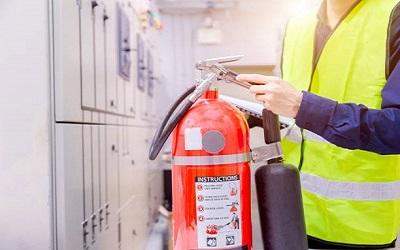Fire Suppression System for A Building: Benefits & Requirements
Fire suppression systems are necessary for commercial buildings and in some residential buildings. Though it is possible to rebuild a building to add a fire suppression system at any time, it is considered best to install a fire suppression system during the building phase of a specific building. It provides cost-effective solutions and safety measures for the building. Many methods can be applied to fire suppression systems while designing a building, but setting up this system by rebuilding decreases the options of methods.
Therefore, the most effective way is to install a fire suppression system during the building’s design phase. This ensures that the building meets its needs and minimizes the risk of potential damage in case of fire.
What exactly is the Fire Suppression System?
Fire Suppression systems involve multi-faceted systems that aim to stop the spread of any flame or smoke and remove or reduce the smoke or flame already in the building. Fire suppression systems are usually combined with other safety systems in the building, such as smoke detectors, emergency light systems, or evacuation plans.
Fire suppression systems are built uniquely for every building in which they are installed. Such systems are always customized as per the needs and requirements of a specific building. Therefore, setting up this system in the designing stage gives you many options to customize it as much as you want regarding materials, overall design, or system choices.
A fire suppression system consists of many different elements, and most systems include active and passive components. Active elements, such as ventilation systems or sprinklers, remove and eliminate flame or smoke. On the other hand, passive elements, such as smoke curtains or fireproof walls, stop the spread of flame or smoke.
While designing a fire compression system, you should consider a comprehensive assessment of the building’s size, number of occupants, use, and overall outlook and layout.
Fire Suppression Systems-Benefits
Many system elements are available to protect your building and equipment in case of fire. Including such a fire suppression system during the design phase offers many benefits.
Protection
A successfully installed fire suppression system can protect you during fires or breakouts and secure your important documents and electronic equipment.
Safety
The components used in such systems are completely safe and secured for humans, non-corrosive and eco-friendly. For instance, the fire suppression system in Florida offers complete safety to the building against any fire.
Fire Suppression Systems-Requirements
The requirements for setting up a fire suppression system vary from building to building. However, all commercial and residential buildings must have fire detection systems, emergency lighting, and sprinkler systems.
Pump Room
While you design the active elements of the fire suppression system, ensure you have all the planning you need for the occupancy, pump room, layout, and square footage. Planning the pump room in the beginning helps you avoid carving out space in the later stages. A pump room should be located where you can easily add additional connections and pipes to reach the critical sections of the specific building.
Fire Areas
Some fire codes require fire areas, each with its own fire suppression system. These areas must be separated from those with fire-retardant materials that will help stop the spread of smoke or flame in case of a fire mishap.
Study the Layout
First, study the building’s layout. Then, obtain the building recommendations and codes before construction. Then, plan for active and passive fire elements properly to set up the safest fire suppression systems.
If the building is designed without these requirements, it will become increasingly challenging to rebuild it later. Therefore, when setting up a fire suppression system, ensure you have everything you need and are prepared.
Conclusion
Fire Suppression Systems should never be an afterthought. Instead, you should set up a fire suppression system in the design phase of the building. Furthermore, it opens up choices for how you want to layout and design the fire protection system in your building.

















